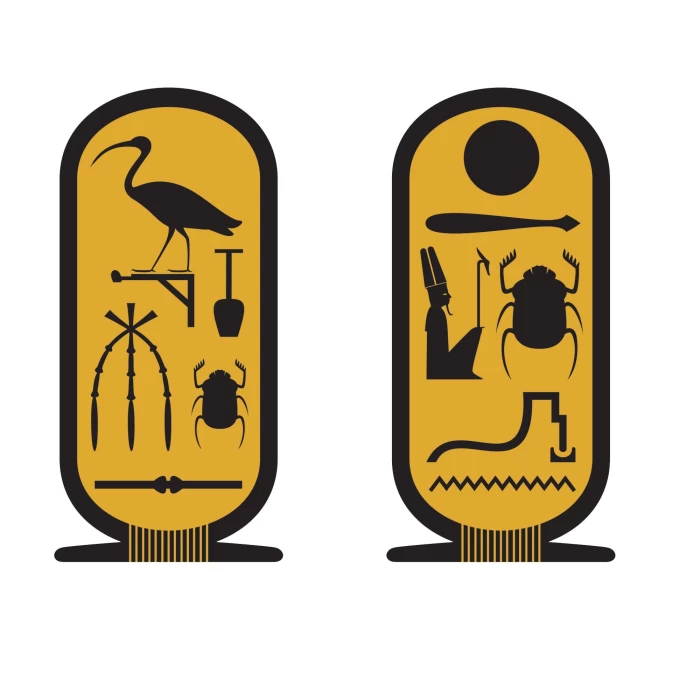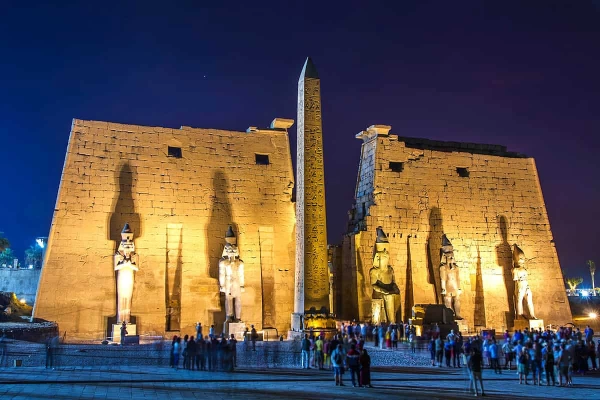
The golden pharaonic cartouche
The golden pharaonic cartouche
The pharaonic cartridge is the ancient expression of the official logo of the seals of kings in the era of the ancient state, so recently the Grand Egyptian Museum worked on the need to show the cartridge of King Ramses II, which is located under his obelisk, which remained buried in the ground for 3,500 years, and for this we review the most prominent cartridges of the king in the ancient state.
The name “shenou” is derived from the verb “sheni”, which means “to surround”. The initial cartouche looks like a circle that “surrounds” the name of the king, and this same circle represents the solar disk (shent shenett), or everything that surrounds the sun, i.e., the world dominated by the pharaoh: The world over which the Pharaoh dominates. These are both plausible and correct interpretations. However, this circle was soon expanded and lengthened to accommodate the full name of the pharaoh; thus, we have only learned of a very small number of round cartouches.
In some bas-reliefs of King Sahu-Ra of the Fifth Dynasty, the cartouche appears in the form of a double rope with knotted ends. As for King Jisr, he made sure that the door of his funerary chamber in the Saqqara pyramid had an inscription with his new names and functions, followed by a round cartouche: The latter is nothing more than a seal without any writings or inscriptions. Undoubtedly, the most ancient cartouche we know of, with the name of the king surrounded by the name of the king, appeared during the reign of Pharaoh Sneferu; in this regard, the royal name (fifth in the list of royal titles and functions) is the one that surrounded the circle.
Among the possessions of King Tutankhamun, a box was found, which is one of the unique artifacts found inside the tomb of King Tutankhamun, and it was designed in the form of a cartouche, on which the name of the king is written, and below the name is one of his titles, “Governor of Thebes”, the box contained many items inside, including two maces.















